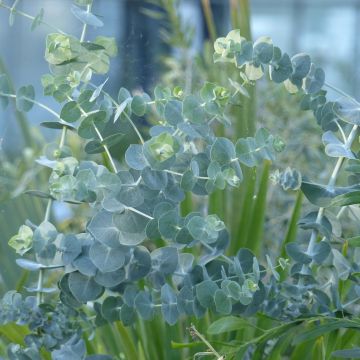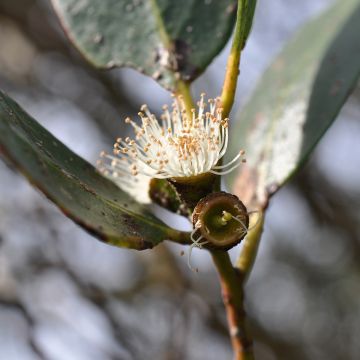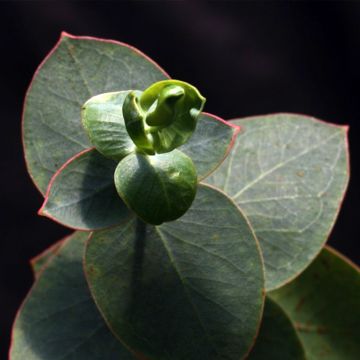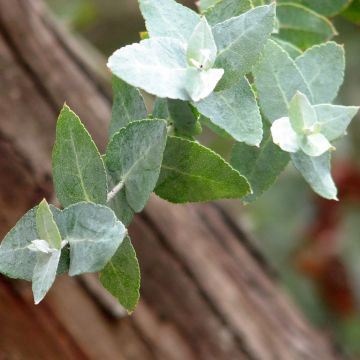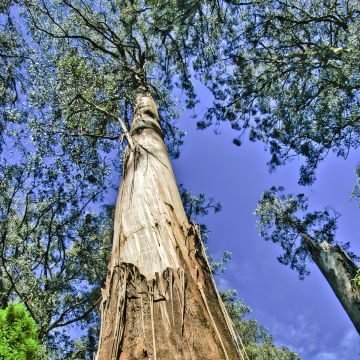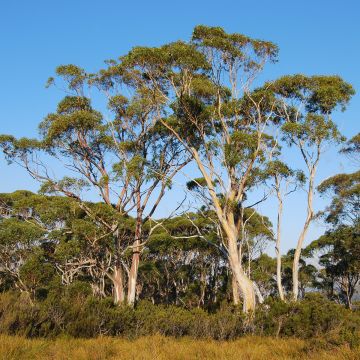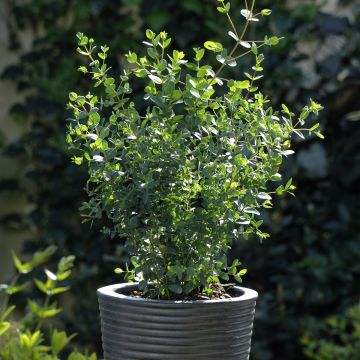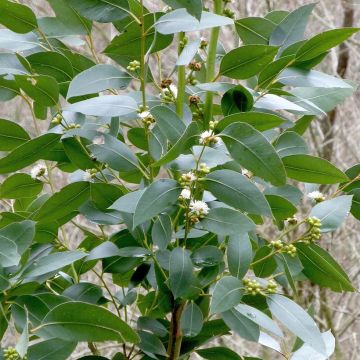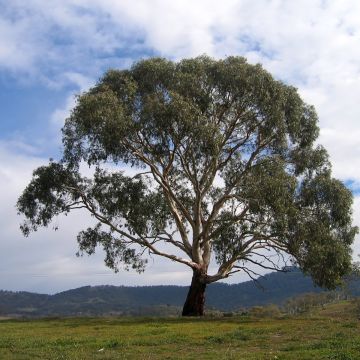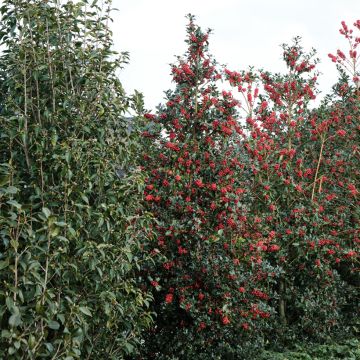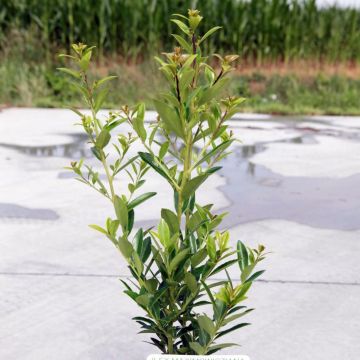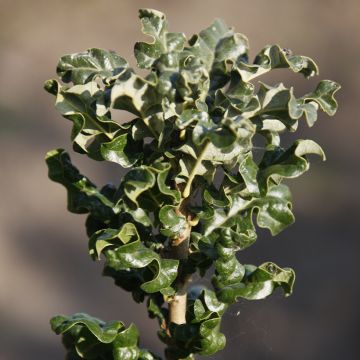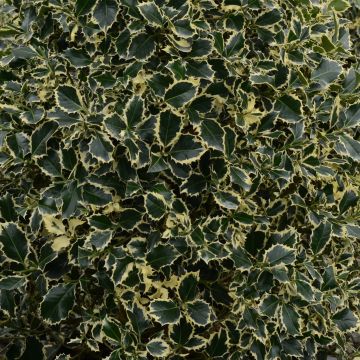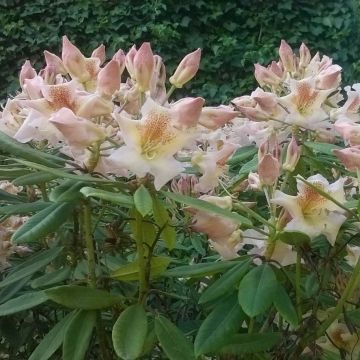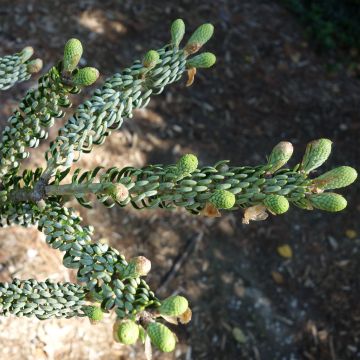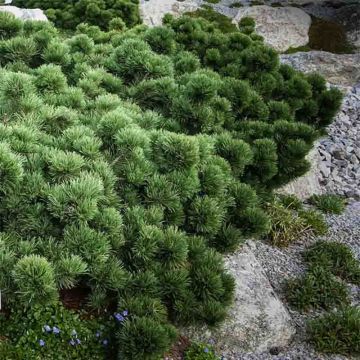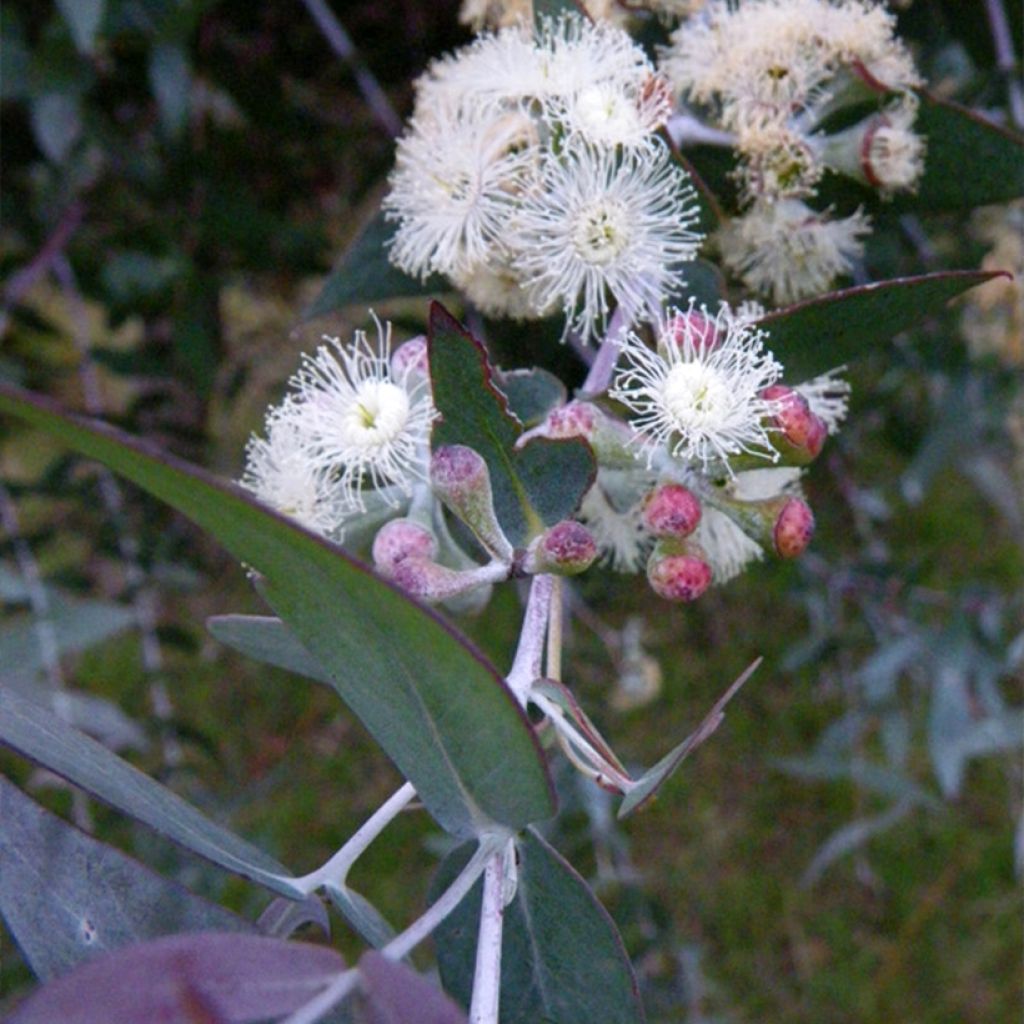

Eucalyptus risdonii
Eucalyptus risdonii
Eucalyptus risdonii
Risdon peppermint
This item cannot be shipped to the selected country
Oversize package delivery charge from €6.90
More information
Schedule delivery date,
and select date in basket
This plant carries a 24 months recovery warranty
More information
We guarantee the quality of our plants for a full growing cycle, and will replace at our expense any plant that fails to recover under normal climatic and planting conditions.
Oversize package: home delivery by special carrier from €6.90 per order..
Express home delivery from €8.90.
Does this plant fit my garden?
Set up your Plantfit profile →
Description
Eucalyptus risdonii is a species native to southern Tasmania, where it only grows in a very limited geographical area. It is a bush or sometimes a small tree that has the peculiarity of keeping its juvenile foliage for a very long time. The opposite, heart-shaped leaves have a superb silvery blue hue. This colouring is even more accentuated when clusters of small white flowers appear at the leaf axil. Growing on well-drained slopes, it is one of the most drought-resistant species, but not very hardy
Eucalyptus risdonii belongs to the vast botanical family of Myrtaceae, which has nearly 6000 species in the tropical and warm temperate regions of the globe. This Eucalyptus grows naturally in a small area of southern Tasmania, near the locality of Risdon which gave it its name. It is found at low altitudes, on the dry slopes east of the Derwent River, in low and open forests.
It forms a bush of a few metres high, occasionally a tree of 7 to 8 m (23 to 26ft), whose trunk carries a light grey bark, which peels off here and there in strips, leaving a smooth, yellow to cream, ornamental surface. This species develops a lignotuber, a swelling rich in starch at the base of the partly underground trunk, which allows the regrowth of buds following a fire.
Another peculiarity of this species is it keeps its juvenile foliage for a very long time, sometimes always. This is what makes it a very ornamental species, as this juvenile foliage is extremely decorative. The sessile and opposite, heart-shaped leaves are fused at their base, with a size from 3 to 5 cm (1.2 to 2 in) long and wide. They are bluish, very glaucous, with silvery reflections. The foliage is very aromatic, which gives this plant its name of "silver peppermint". The branches are dense and bushy. The adult leaves, when they form, are significantly less attractive, with their somewhat dull green colour. Arranged in an alternate manner, they are elongated (10 cm (3.9 in) x 2 cm (0.8 in)) and crescent-shaped.
From November to January in Tasmania, which corresponds to our summer, white flowers appear from silver buds in groups of 9 to 15 at the base of the juvenile leaves. The crown stands out even more silvery than usual, reinforcing the ornamental aspect of the bush. The flowers are small, measuring 1 to 2 cm (0.4 to 0.8 in) in diameter and form small, capsule fruits, without ornamental interest.
This Eucalyptus develops in neutral to acidic soils, not appreciating limestone. It does not dislike drought, it is probably the Tasmanian species that tolerates it the best. Like most Eucalyptus, it thrives in sunny exposure. Although from the south of Tasmania, therefore in an area far from the Tropic of Capricorn, this species is not very hardy. It withstands brief frosts down to about -7°C (19.4 °F).
This silver Eucalyptus will form superb scenes, associated with other plants with ornamental foliage, like the purple Bailey's Mimosa (Acacia baileyana Purpurea). This bush with finely cut foliage develops purple young shoots which will form a sumptuous contrast with the silver foliage of the Eucalyptus. For an even more pronounced contrast, opt for the dark purple foliage of Pittosporum tenuifolium Purpureum, a small bush native to New Zealand. Banksia integrifolia, a tree-like Proteaceae with dark green evergreen foliage and large pale yellow flowers in tight spikes, will also be a good companion to create an exotic scene.
Report an error about the product description
Eucalyptus risdonii in pictures
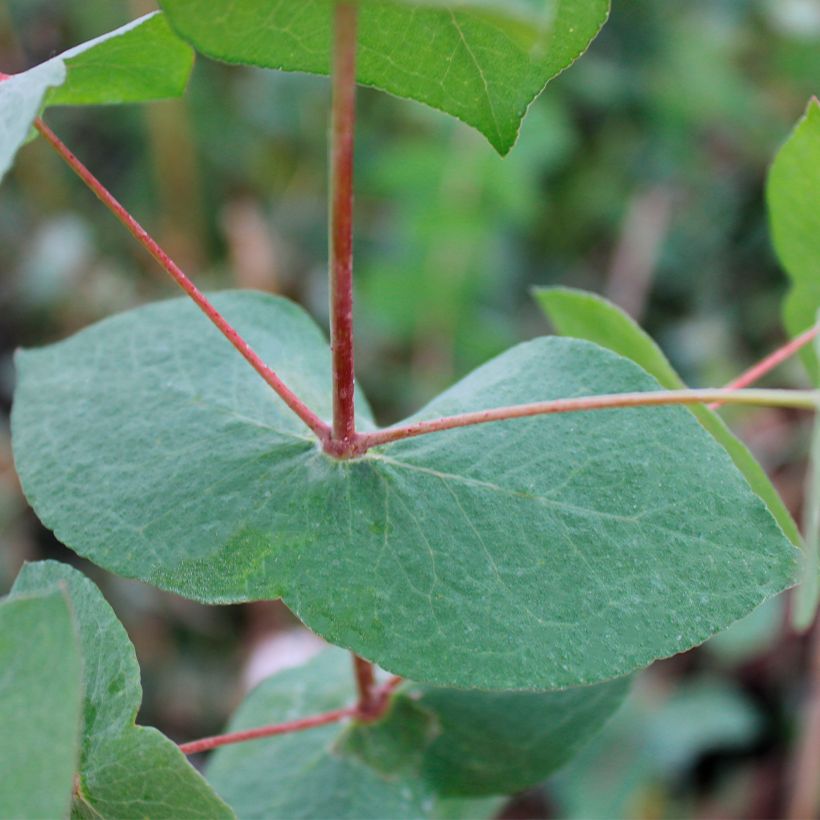

Plant habit
Flowering
Foliage
Botanical data
Eucalyptus
risdonii
Myrtaceae
Risdon peppermint
Australia
Other Eucalyptus
Planting and care
Eucalyptus risdonii is best planted at the start of spring in a cold region, at the beginning of autumn in a dry and warmer climate. Plant in well-drained soil, moist to dry in summer, even slightly chalky. It is planted in a sunny exposure. A well-established subject is hardy down to -15 °C (5 °F) under these conditions, young plants are more sensitive to cold. In many regions, you can plant it in the ground, taking care of the drainage with a contribution of coarse sand, pozzolana or gravel. Then let nature take its course, the growth is quite rapid. Water regularly for the first two years, then the bush generally does without watering in summer except in the driest regions. Fertiliser is not recommended. Pruning is well tolerated, after flowering.
Gum trees are useful for drying up wet lands, as they are large consumers of water even in winter. However, they are quite resistant to drought once well established (depending on the varieties). Mountain species are interesting for their hardiness, but they dislike heatwaves and dry soils.
Planting period
Intended location
Care
This item has not been reviewed yet - be the first to leave a review about it.
Evergreen shrubs
Haven't found what you were looking for?
Hardiness is the lowest winter temperature a plant can endure without suffering serious damage or even dying. However, hardiness is affected by location (a sheltered area, such as a patio), protection (winter cover) and soil type (hardiness is improved by well-drained soil).

Photo Sharing Terms & Conditions
In order to encourage gardeners to interact and share their experiences, Promesse de fleurs offers various media enabling content to be uploaded onto its Site - in particular via the ‘Photo sharing’ module.
The User agrees to refrain from:
- Posting any content that is illegal, prejudicial, insulting, racist, inciteful to hatred, revisionist, contrary to public decency, that infringes on privacy or on the privacy rights of third parties, in particular the publicity rights of persons and goods, intellectual property rights, or the right to privacy.
- Submitting content on behalf of a third party;
- Impersonate the identity of a third party and/or publish any personal information about a third party;
In general, the User undertakes to refrain from any unethical behaviour.
All Content (in particular text, comments, files, images, photos, videos, creative works, etc.), which may be subject to property or intellectual property rights, image or other private rights, shall remain the property of the User, subject to the limited rights granted by the terms of the licence granted by Promesse de fleurs as stated below. Users are at liberty to publish or not to publish such Content on the Site, notably via the ‘Photo Sharing’ facility, and accept that this Content shall be made public and freely accessible, notably on the Internet.
Users further acknowledge, undertake to have ,and guarantee that they hold all necessary rights and permissions to publish such material on the Site, in particular with regard to the legislation in force pertaining to any privacy, property, intellectual property, image, or contractual rights, or rights of any other nature. By publishing such Content on the Site, Users acknowledge accepting full liability as publishers of the Content within the meaning of the law, and grant Promesse de fleurs, free of charge, an inclusive, worldwide licence for the said Content for the entire duration of its publication, including all reproduction, representation, up/downloading, displaying, performing, transmission, and storage rights.
Users also grant permission for their name to be linked to the Content and accept that this link may not always be made available.
By engaging in posting material, Users consent to their Content becoming automatically accessible on the Internet, in particular on other sites and/or blogs and/or web pages of the Promesse de fleurs site, including in particular social pages and the Promesse de fleurs catalogue.
Users may secure the removal of entrusted content free of charge by issuing a simple request via our contact form.
The flowering period indicated on our website applies to countries and regions located in USDA zone 8 (France, the United Kingdom, Ireland, the Netherlands, etc.)
It will vary according to where you live:
- In zones 9 to 10 (Italy, Spain, Greece, etc.), flowering will occur about 2 to 4 weeks earlier.
- In zones 6 to 7 (Germany, Poland, Slovenia, and lower mountainous regions), flowering will be delayed by 2 to 3 weeks.
- In zone 5 (Central Europe, Scandinavia), blooming will be delayed by 3 to 5 weeks.
In temperate climates, pruning of spring-flowering shrubs (forsythia, spireas, etc.) should be done just after flowering.
Pruning of summer-flowering shrubs (Indian Lilac, Perovskia, etc.) can be done in winter or spring.
In cold regions as well as with frost-sensitive plants, avoid pruning too early when severe frosts may still occur.
The planting period indicated on our website applies to countries and regions located in USDA zone 8 (France, United Kingdom, Ireland, Netherlands).
It will vary according to where you live:
- In Mediterranean zones (Marseille, Madrid, Milan, etc.), autumn and winter are the best planting periods.
- In continental zones (Strasbourg, Munich, Vienna, etc.), delay planting by 2 to 3 weeks in spring and bring it forward by 2 to 4 weeks in autumn.
- In mountainous regions (the Alps, Pyrenees, Carpathians, etc.), it is best to plant in late spring (May-June) or late summer (August-September).
The harvesting period indicated on our website applies to countries and regions in USDA zone 8 (France, England, Ireland, the Netherlands).
In colder areas (Scandinavia, Poland, Austria...) fruit and vegetable harvests are likely to be delayed by 3-4 weeks.
In warmer areas (Italy, Spain, Greece, etc.), harvesting will probably take place earlier, depending on weather conditions.
The sowing periods indicated on our website apply to countries and regions within USDA Zone 8 (France, UK, Ireland, Netherlands).
In colder areas (Scandinavia, Poland, Austria...), delay any outdoor sowing by 3-4 weeks, or sow under glass.
In warmer climes (Italy, Spain, Greece, etc.), bring outdoor sowing forward by a few weeks.

































